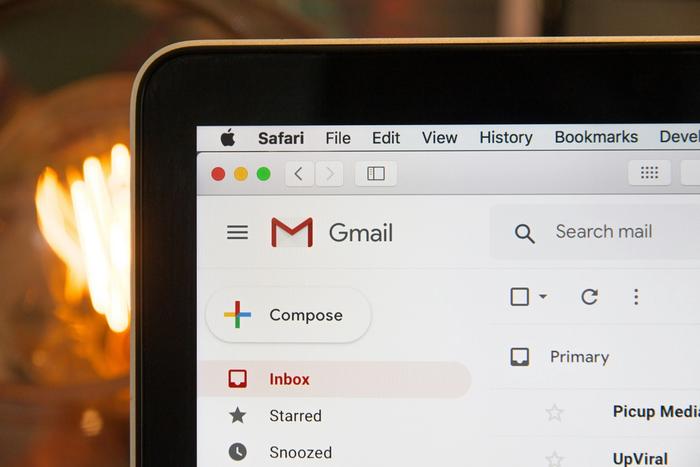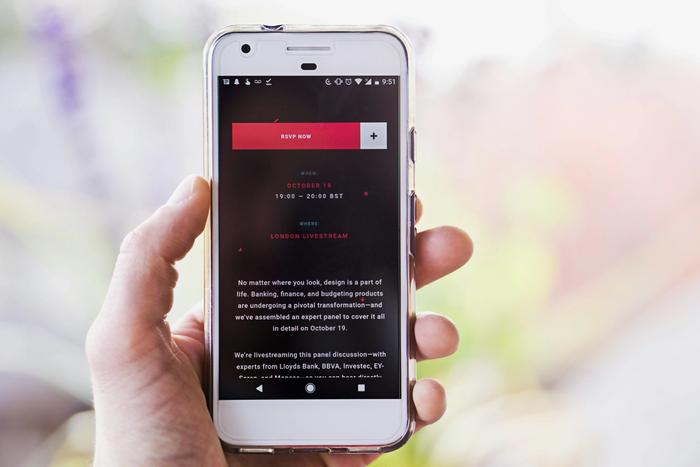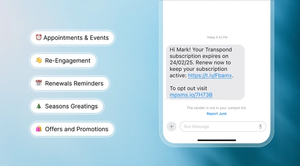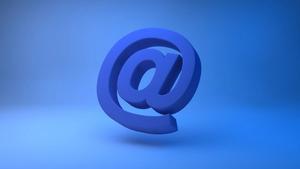Email marketing is big business. The industry is expected to generate 37.5 million dollars in revenue by 2032, so if you're not investing time and effort into your email marketing campaigns, you're missing out.
Email marketing is low risk high reward. On average businesses receive $36 for every $1 spent making it a great way to generate revenue. But it has to be done well. By 2026 it's predicted that over 392 billion emails will be sent daily, so how can you stand out?
From choosing the right subject line to identifying when to send it, there are plenty of factors affecting the success of your email marketing. Let's discuss the benefits of email marketing, how to create your email marketing strategy, and how to boost email ROI.
What is an email marketing campaign?
An email marketing campaign is a sequence of messages delivered to nurture leads and build relationships with customers. They're used for several reasons and can help push leads through the customer journey towards a conversion.
Every successful email marketing campaign includes elements like a well-written subject line, focused and targeted content, and a specific call to action (CTA). The best-performing campaigns segment their audience so each user receives personalized content relevant to their interests. This helps ensure that you make the most of your marketing efforts.

What makes a good email marketing campaign?
Every email campaign is different, but there are a few things that every successful campaign needs. Let's explore a few email marketing tips to help you get started:
Good subject lines
First impressions are important. That's why your email subject lines must grab your reader's attention.
A good subject line makes your readers want to click on your email and interact with its contents. This is the best way to ensure your content gets in front of your readers.
Simple language
Your audience is busy, so don't fill your email with unnecessary content. Make your email simple, easy to read, and straight to the point.
That way your audience knows exactly what action you want them to complete making it more likely that they'll convert.
Mobile-friendly
46% of all emails are opened on mobile devices, so you must make your content mobile-friendly.
Non-mobile-friendly email campaigns can make it hard for users to access and understand messaging. If your readers have to use a separate device to access your email they'll be less likely to read it, seriously hurting the effectiveness of your campaigns. So, before sending your email campaign think how it’ll look on a mobile device.

Valuable content
Don't waste your marketing efforts sending content that isn't, useful, interesting or engaging. Your email campaigns should contain information your audience wants to know, otherwise, your emails won’t get read. Plus if you repeatedly send content that they're not interested in, your users could unsubscribe.
Perform A/B testing
A/B testing is a big part of email marketing. It's the process of sending two variations of your campaign to subsections of your subscribers to help you understand which version is more popular with your readers.
Once you know which variation is more successful, you can change your approach to suit your subscriber's preference.
Benefits of a good email campaign
When done right, email marketing can create many benefits for your business. Sending out targeted and relevant content can lead to happy customers who then become loyal customers.
Tools like Transpond make it easy for businesses of all sizes to send out automated emails, meaning there's no reason why you shouldn't be reaping the benefits of email marketing campaigns.
Other benefits include:
- Better brand awareness
- Improved lead generation
- Stronger customer relationships
- More closed deals and sales growth
- Higher website traffic
- Better brand loyalty.
Types of emails to send in a campaign
Now we've explored what makes a good campaign, let’s examine the different types of emails you could utilize.
Sales and promotional emails
These are some of the most common and often successful email marketing ideas. These marketing emails typically offer limited deals, flash sales, or a coupon code to persuade subscribers to act fast.
A promotional email utilizes urgency to help incentivize the reader to make an impulse purchase. But don't forget about email personalization, identifying specific trends in a reader's shopping habits can be the key to helping close the deal.
Adding call-to-action buttons can help drive your click-through rate as you're actively directing readers to your site and can program your deal to be added automatically.

Welcome emails
A welcome email (also known as introductory emails) is sent to new customers or subscribers after they sign up for your mailing list. This could be done after a purchase, accessing gated downloadable content, or signing up for a discount.
An introductory email is a great way to make a good first impression. They help you accomplish two things, build a connection with new subscribers and explain the type of content you typically share. Secondly, they encourage customers to learn more about your company and product offering.
Product recommendations
Customers like to feel that businesses understand their needs. By analyzing a customer's purchase history, you can better understand what they're looking for and encourage customers to make new purchases based on your suggestions.
Personalized data suggestions can help drive engagement and increase sales. To source and analyze this data you must invest in tools like a customer relationship management system (CRM). This can help you collect the valuable information you need to create a successful email marketing campaign.
Abandoned cart
How often have you filled up your online cart and backed out at the last second? Abandoned carts are a great opportunity to bring back shoppers and push them to finalize their purchases. When potential customers get to this stage they're already far down the customer journey meaning they're much more likely to convert.
Sending a reminder email with an exclusive discount or limited offer can lead to customers coming back to complete their purchase. Here, you should use the fear of missing out (FOMO) to entice customers by specifying the exclusivity of the deal.
Contests and giveaways
Contents and giveaways can encourage subscribers and existing customers to interact with your content. The specifics of the contest are up to you and can be linked to your other marketing efforts. For example, you could ask subscribers to interact with your social media channels or share your blog content.
The incentive of a gift or exclusive offer can direct email subscribers down the marketing funnel until they convert to paying customers. Unlike other email marketing ideas, you can send reminders and updates to create buzz around your competition or giveaway.
Contests and giveaways are great for growing your email subscriber lists but also for helping you market user-generated content.
Industry news and newsletters
Email marketing is about more than just the hard sell. It's a way to nurture customer relationships and build brand loyalty.
Industry news is a great way to keep your customers informed and create the opportunity to share valuable content via an informational email. Create a newsletter that covers the latest news, trends, and any other topics that might be interesting to your subscribers.
While you can use third-party sources to help build your email, highlighting your content is the best approach. Sharing a recent blog post can help drive traffic and boost your website's search engine optimization.

Surveys and feedback
Customer feedback is one of the best assets when improving your marketing campaigns. So, why not combine the two and include surveys and feedback forms within your email marketing campaigns?
This data can give you great insight into what your subscribers love and hate about your email marketing strategy. With this information, you can tailor your approach to better target your ideal audience and improve your products and services.
You can provide incentives to encourage subscribers to respond like special deals or one-off promotions.
Webinar invites
Webinars are a great way to connect with your audience. They allow you to engage with a wide audience in real-time and explore a topic on a deeper level than typical video content. Webinars can increase audience engagement by up to 90% compared to traditional video content.
Email campaigns are a great way to let your subscribers know about upcoming webinars. You should send out regular reminders to help boost registration and attendance rates and send transactional emails thanking those who do sign up.
Company updates
Just launched a new product? Opened a second location? Or create a new feature that's solved a common issue that customers have been experiencing? Let your subscribers know.
Customers love to be in the know, it's often a factor that improves customer loyalty. Keeping your subscribers in the loop can help build better customer relationships and keep in touch with your broader audience. They're a great way to boost engagement, and being transparent about your ongoing projects can help establish trust.
Seasonal and holiday campaigns
Holidays are a great time to send out an email marketing campaign. They usually revolve around gifts and celebrations making it the perfect time to be generous and share discounts and other promotional deals. Customers respond well to the generosity, winter holiday sales alone can make up 19% of a business's total revenue so it's a great time to capitalize on the benefits.
Seasonal campaigns also allow you to plan months ahead, making it even easier to manage your campaign. By doing so, companies can enjoy the benefits without having to worry about getting everything implemented at the last minute.
Re-engagement
Customers are great, but engaged customers are crucial. Every business knows inactive contacts can waste business resources, but how can you get them to re-engage? There are plenty of reasons why a customer might become disengaged. They might find your content uninteresting or irrelevant, or your messages could be sent at inconvenient times meaning they get missed.
Subject lines might also be an issue. You need to try and capture your reader's attention instantly, so choosing something unengaging or uninteresting can make them reluctant to open and read your message.

Important metrics for email marketing
Now you know some of the most popular email marketing ideas, you need to understand how to measure its success. There are so many marketing metrics that you could potentially measure, but the specific ones you choose to track depends on the aim of your campaign and what you want to achieve.
For example, to boost sales you’d track a campaign's conversion rate.
However, if you were looking to improve engagement, you might send a follow-up email and track the open rate.
Let's look at some examples of metrics that could be tracked.
Open rate
This refers to how many recipients open your emails. Usually expressed as a percentage, this is one of the main metrics email marketers track. The key to a high open rate is creating a subject line that resonates with your target audience.
While the open rate is important, it can be seen as a vanity metric. That's because it tells you very little about what your target audience did after opening the email. While you can get some great value from the open rate metric, it's important to view it comparatively.
For example, compare the open rate of one campaign to another to identify what is and isn't working. If one send received a significantly higher open rate than the other then you know what you need to consider when creating campaigns in the future.
Bounce rate
Bounce rate in general is the total number of emails that couldn't be delivered to a recipient's inbox. It's calculated by dividing the number of bounced emails by the number of emails sent and multiplying the answer by 100.
“For example: 50 bounced emails ÷ 25,000 emails X 100 = 0.2% bounce rate”
There are two types of bounces to consider: hard and soft.
Soft bounces are when an email address is correct but there is some temporary problem, like a full inbox, or a problem with the server.
Hard bounces however are down to an invalid, closed, or non-existent email address. These errors can't be fixed and so will never be delivered.
You’re best removing hard-bounce email addresses after every send to avoid filling your email list with leads that aren’t going anywhere.
List growth rate
One of the main goals of email marketing is growing your subscriber list. Apart from call-to-action metrics, it's one of the most important metrics you can measure. Every business wants to grow its list so it can widen its reach and grow its audience. Doing so is essential to position yourself as a thought leader within the industry.
Email marketing lists tend to have a natural decay, and you lose about 22.71% of your addresses every year, so achieving new sign-ups is essential to stay ahead of the game.
The formula is simple, number of new subscribers - number of unsubscribed ÷ total of email addresses X 100.
Click-through rate (CTR)
Click-through rates are one of the main metrics that email marketers track. It's the percentage of recipients that click on either one or more of the links in an email. This is a great indicator that the email has reached its intended target audience and that customers are interested in the content.
The percentage is calculated by dividing total clicks by the number of delivered emails X 100.
“So for example: 700 clicks ÷ 10,000 delivered emails X 100 = 7%”
Unsubscribe rate
Ethics are important in email marketing. You're handling someone's personal information so you need to allow them to remove themselves from your mailing list should they wish. In some countries, it's a legal requirement to display an unsubscribe button on all marketing and sales emails
To calculate your unsubscribe rate you need to divide the number of unsubscribed users by the number of emails delivered. Then, multiply that number by 100 to get a percentage.
For example: 100 unsubscribers ÷ 10,000 emails X 100 = 1%
There are plenty of reasons why someone may choose to unsubscribe from your mailing list, but if you're noticing that more and more customers are unsubscribing then you need to identify the problem.
Conversion rate
Simply put, your conversion rate is how many leads or email subscribers become customers. It helps you accurately measure the success of your email marketing campaign ideas and assess whether your current approach is working.
Calculating the conversion rate is simple. Divide the total number of conversions by the number of visitor clicks and multiply the result by 100.
“For example: 1,000 conversions ÷ 20,000 clicks X 100 = 5%”
Now, build your own email marketing campaign
Building an email marketing campaign that achieves results can take time and effort, but when done right you can benefit from increased ROI. Before starting to build an email marketing campaign you need to think about what your customers want.
Is it a friendlier welcome email? More informative email subject lines? Or is there a whole other way to reach more customers? Email campaigns are unique to your customer needs. So you need to consider what can help you reach your target audience.
With Capsule you can manage all your customer data and interactions at a glance. Try Capsule free for 14 days and discover how it can help you build better professional relationships.
![11+ email marketing ideas you should use [and metrics guide]](https://cdn.sanity.io/images/poftgen7/production/b4c19e04da4ee7cbe2822a14864369c05a496be8-5700x3206.jpg?w=800&h=450&q=100&fit=max&auto=format)



